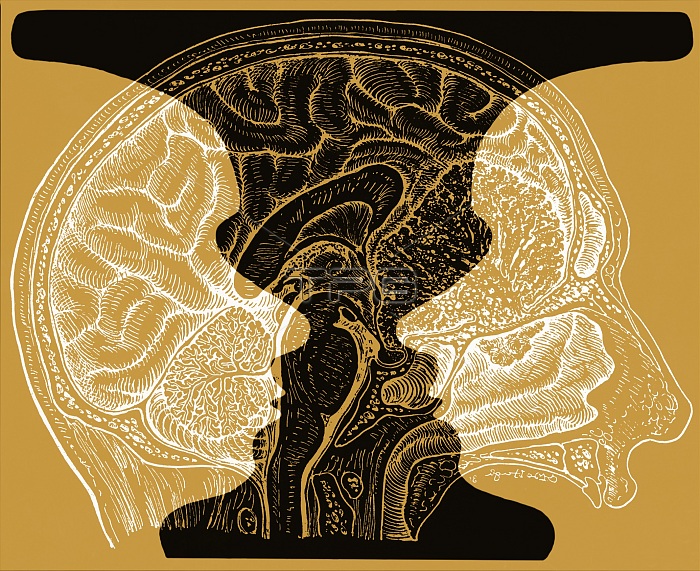
Conceptual illustration of a brain superimposed on the optical illusion of a Rubin vase. The Rubin vase is a famous set of ambiguous or bi-stable (i.e., reversing) two-dimensional forms developed around 1915 by the Danish psychologist Edgar Rubin. A viewer sees the image either as two faces looking at each other in front of a black background, or as a black vase. The shape of the image depends on the side of the line a viewer chooses as part of the figure. This is important because the human brain has in general just one object in the field of perception and the other objects go into the background.
| px | px | dpi | = | cm | x | cm | = | MB |
Details
Creative#:
TOP22167831
Source:
達志影像
Authorization Type:
RM
Release Information:
須由TPG 完整授權
Model Release:
N/A
Property Release:
No
Right to Privacy:
No
Same folder images:

 Loading
Loading